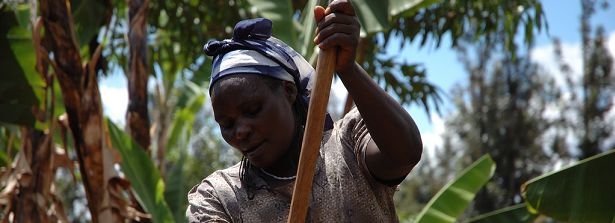
This training course “Gender Integration in Food & Nutrition Security” provides guidance on how to design and implement agriculture policies and programmes that are gender-responsive, sustainable, contributing to gender equality, and therefore able to improve food and nutrition security.
Women in developing countries play a crucial role in meeting the food and nutrition needs of their families through the three pillars of food security which are; food production, economic access to food, and nutrition security. Despite women’s importance, they are constrained by lower access to land, credit and extension advice, as well as by domestic responsibilities. These constraints have consequences for productivity, efficiency and environmental sustainability. To address these, different approaches can be taken to make the design of agricultural projects gender-sensitive.
Training Objective
At the end of the training, the learner will be able to:
- Understand the gender-differentiated roles in agriculture and food security.
- Understand the gender-differentiated impacts in agriculture and food security.
- Identify the gender gaps in the agricultural sector that make women particularly vulnerable to food insecurity as well as show they hinder agricultural development in rural communities.
- Identify appropriate responses to close the gender gap in the agricultural sector in order to achieve gender equality and food security.
- Understand the need and options for integrating of gender perspectives into agricultural and food security policies.
- Understand and minimize gender barriers in the food industry.
Topics to be covered
Overview of gender concepts and principles
- Closing the gender gap in the food industry
- Gender roles in a vibrant food and nutritional security
- Gender discrimination and gender equality
- Gender dimensions of food and nutrition security
Gender Access to
- Quality extension services
- Agricultural land
- Markets and finances
- Household’s food
Gender in food and nutrition security policy and legislation
- International commitments on gender equality
- Gender statistics for informing policy and legislation
- Producing gender statistics
- Formulating gender-responsive food and nutrition security policies
- Translating national food and nutrition security policies into a gender-responsive plan of action
- Gender advocacy for food and nutrition security
Gender in food and nutrition security programming
- Conducting a gender analysis for programme design
- Designing gender-responsive food and nutrition security projects and programmes
- Gender and programme implementation
- Addressing gender in organizations working on food and nutrition security
Gender-sensitive monitoring and evaluation for food and nutrition security
- Introduction to M&E in Gender and food security
- Prioritizing gender in M&E plans
- Exploring gender in M&E plans in nutrition
- Selecting indicators to measure gender related outputs and outcomes
- Gender considerations for data collection, interpretation and use
- Impact of food distribution on genders’ vulnerability
More information
For more information on the methodology, facilitation, fees and registration, visit the website or contact .
- This event has passed.

